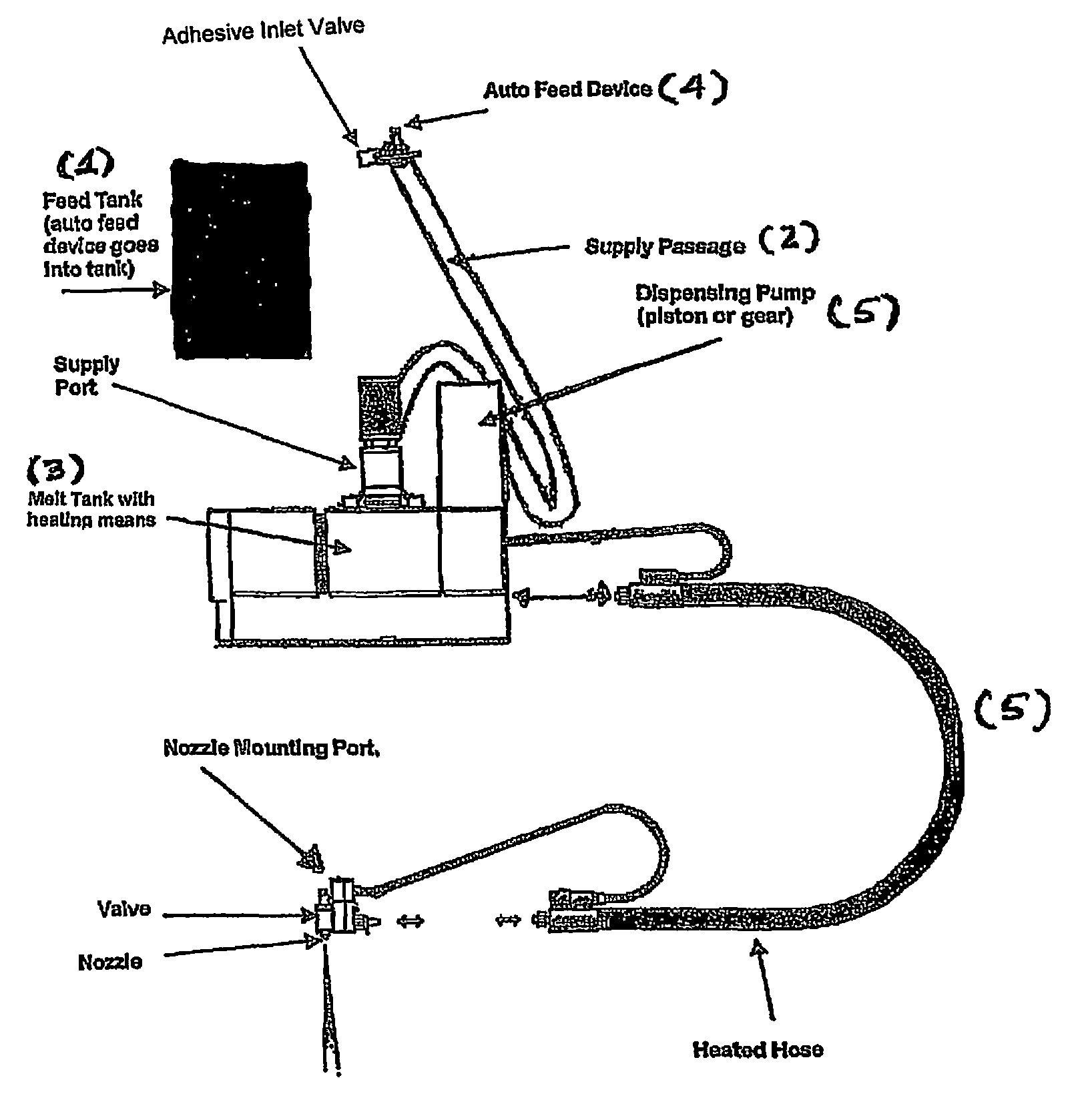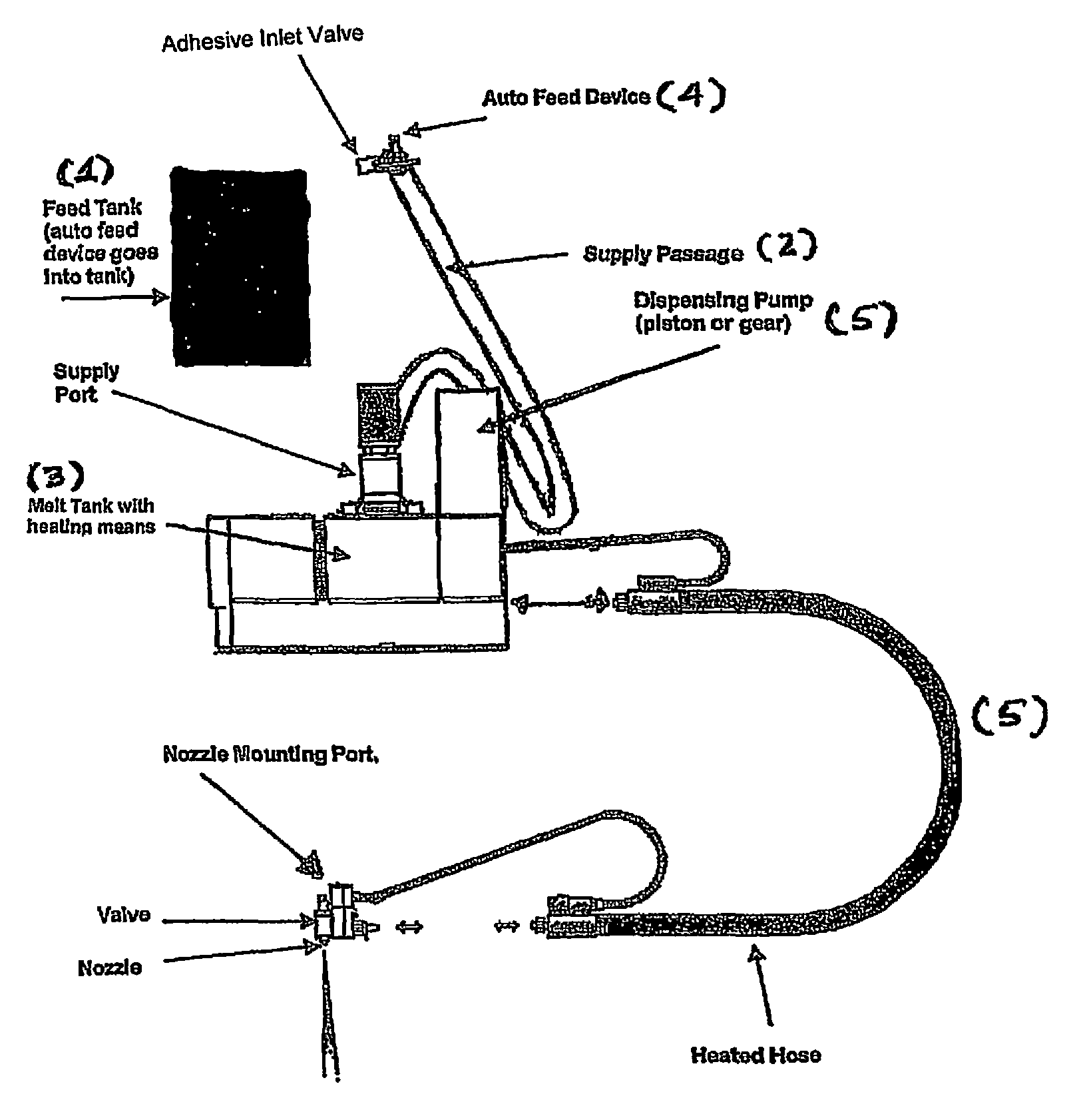Integrated low application temperature hot melt adhesive processing system
a technology of hot melt adhesive and processing system, which is applied in the direction of liquid transfer devices, furniture, lighting and heating apparatus, etc., can solve the problems of affecting the dispensing performance, frequent downtime, and stagnation of adhesives, so as to prolong the service life of equipment, its electrical components and, the effect of prolonging the pot li
- Summary
- Abstract
- Description
- Claims
- Application Information
AI Technical Summary
Benefits of technology
Problems solved by technology
Method used
Image
Examples
example
[0042]Two hot melt dispensing systems were set up. One, designated the 350° F. unit, was used to process a conventional industrial (350° F.) hot melt adhesive having a viscosity of 800-1200 cps at its at application temperature. The other, designated the 200° F. unit, was used to process a low application temperature (200° F.) hot melt adhesive having a viscosity of 1200-1400 cps at its application temperature.
[0043]Each system pumped adhesive through a hose connected to a block containing four different module types (A-D), i.e., four different types of valves use in hot melt dispending equipment, which were directed back into the tank and monitored for signs of failure.
[0044]Results are summarized in Table 1, where failure level 1 denotes signs of modules ‘dripping’ or moderate discontinuous adhesive leakage due to partial seal failure. Failure level 2 represents continuous adhesive flow leakage due to catastrophic seal failure.
[0045]
TABLE 1350° F.200° F.FailureModulecyclescycles%l...
PUM
| Property | Measurement | Unit |
|---|---|---|
| operating temperature | aaaaa | aaaaa |
| temperatures | aaaaa | aaaaa |
| temperatures | aaaaa | aaaaa |
Abstract
Description
Claims
Application Information
 Login to View More
Login to View More - R&D
- Intellectual Property
- Life Sciences
- Materials
- Tech Scout
- Unparalleled Data Quality
- Higher Quality Content
- 60% Fewer Hallucinations
Browse by: Latest US Patents, China's latest patents, Technical Efficacy Thesaurus, Application Domain, Technology Topic, Popular Technical Reports.
© 2025 PatSnap. All rights reserved.Legal|Privacy policy|Modern Slavery Act Transparency Statement|Sitemap|About US| Contact US: help@patsnap.com


